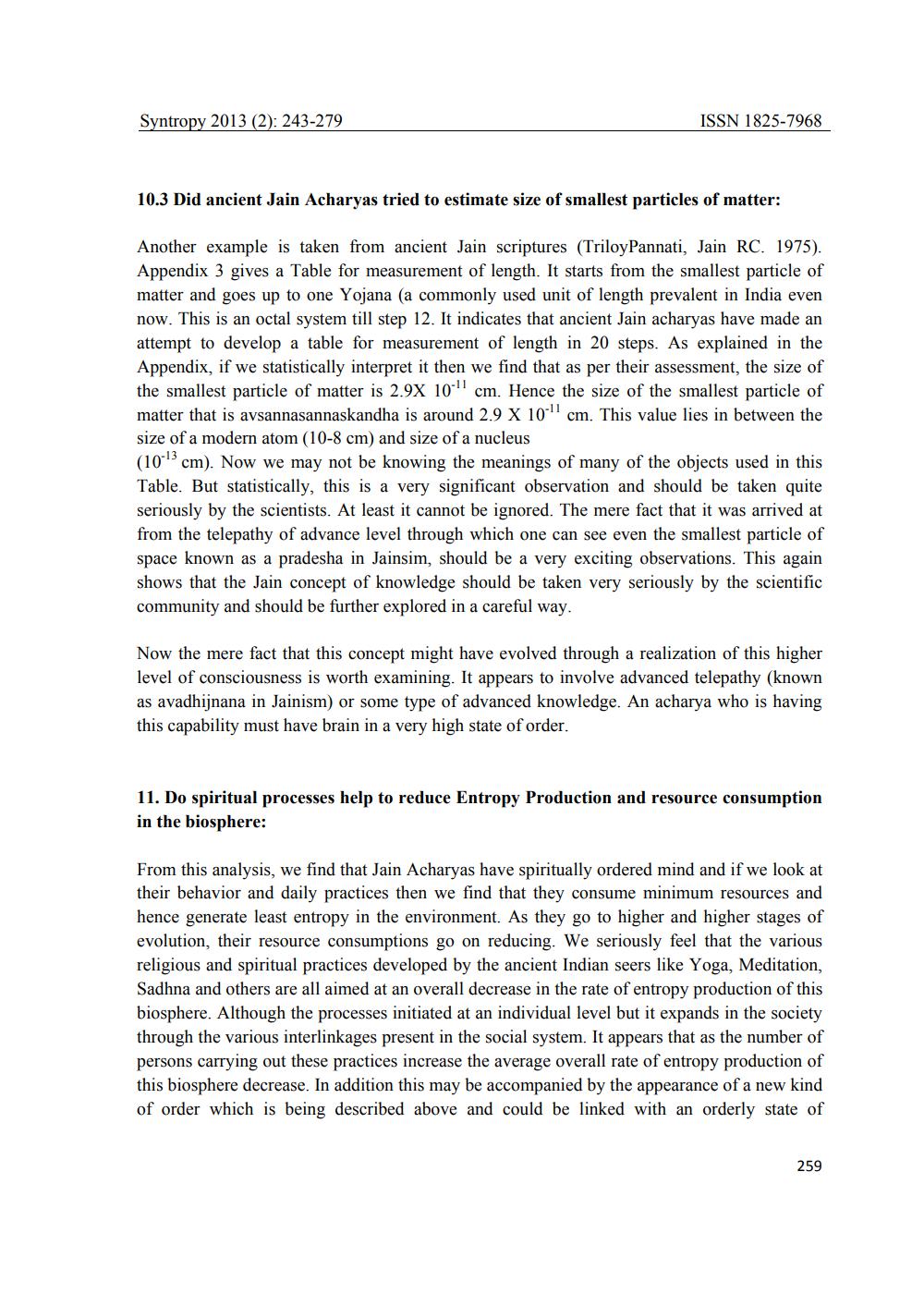________________
Syntropy 2013 (2): 243-279
ISSN 1825-7968
10.3 Did ancient Jain Acharyas tried to estimate size of smallest particles of matter:
Another example is taken from ancient Jain scriptures (Triloy Pannati, Jain RC. 1975). Appendix 3 gives a Table for measurement of length. It starts from the smallest particle of matter and goes up to one Yojana (a commonly used unit of length prevalent in India even now. This is an octal system till step 12. It indicates that ancient Jain acharyas have made an attempt to develop a table for measurement of length in 20 steps. As explained in the Appendix, if we statistically interpret it then we find that as per their assessment, the size of the smallest particle of matter is 2.9X 10" cm. Hence the size of the smallest particle of matter that is avsannasannaskandha is around 2.9 X 10 cm. This value lies in between the size of a modern atom (10-8 cm) and size of a nucleus (10 cm). Now we may not be knowing the meanings of many of the objects used in this Table. But statistically, this is a very significant observation and should be taken quite seriously by the scientists. At least it cannot be ignored. The mere fact that it was arrived at from the telepathy of advance level through which one can see even the smallest particle of space known as a pradesha in Jainsim, should be a very exciting observations. This again shows that the Jain concept of knowledge should be taken very seriously by the scientific community and should be further explored in a careful way.
Now the mere fact that this concept might have evolved through a realization of this higher level of consciousness is worth examining. It appears to involve advanced telepathy (known as avadhijnana in Jainism) or some type of advanced knowledge. An acharya who is having this capability must have brain in a very high state of order.
11. Do spiritual processes help to reduce Entropy Production and resource consumption in the biosphere:
From this analysis, we find that Jain Acharyas have spiritually ordered mind and if we look at their behavior and daily practices then we find that they consume minimum resources and hence generate least entropy in the environment. As they go to higher and higher stages of evolution, their resource consumptions go on reducing. We seriously feel that the various religious and spiritual practices developed by the ancient Indian seers like Yoga, Meditation, Sadhna and others are all aimed at an overall decrease in the rate of entropy production of this biosphere. Although the processes initiated at an individual level but it expands in the society through the various interlinkages present in the social system. It appears that as the number of persons carrying out these practices increase the average overall rate of entropy production of this biosphere decrease. In addition this may be accompanied by the appearance of a new kind of order which is being described above and could be linked with an orderly state of
259




